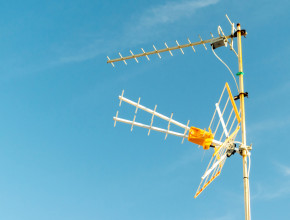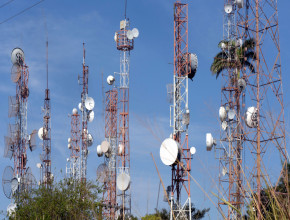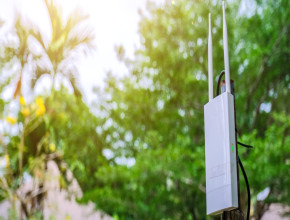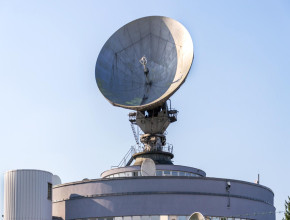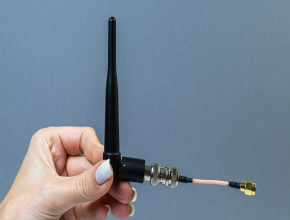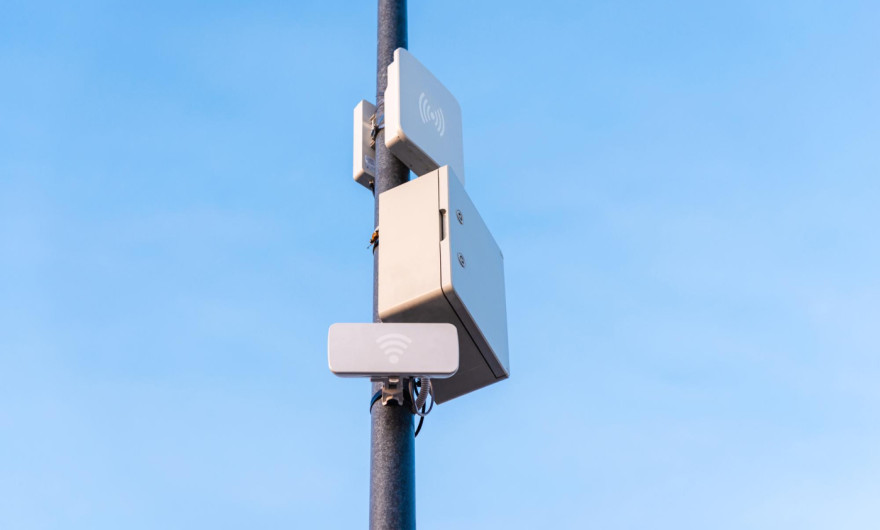
Strong and dependable wireless connectivity and a smooth network are crucial for every individual in this modernised world. Today, we will discuss RFID, an unsung hero. RFID antennas are used by every individual without even realizing how important it is. In this blog, we will simplify the jargon and erase all your confusion regarding the RFID antennas. Let's get into it!
What is an RFID antenna?
RFID antennas refer to a specialized component created to transmit and receive radio frequency signals in an RFID system. Radio Frequency Identification (RFID) is an essential system for modern tracking and identification. These antennas' primary purpose is to facilitate communication between the RFID reader and tags. They transmit radio waves to power the tags and receive their backscattered signals.
You can use them as a Yagi antenna or a portal antenna according to your specific requirements. RFID antennas are widely used in many leading industries like manufacturing, healthcare and medical tracking, warehouses, security and access control, and more. If you want to buy premium quality RFID antennas, you should get in contact with the best antenna manufacturer around you.
Types of RFID Antennas
RFID antennas are of many different types on the basis of their forms and applications. These antennas are operated in many different sectors based on their unique features. They can be both directional and omnidirectional antennas, offering you more diversity. If you are considering having these antennas, then it's necessary for you to understand their types. Here are the 5 types of RFID antennas:
1) Patch Antenna
A patch antenna is a low-profile and flat antenna. It has a metallic element that can be rectangular or square and serves as a radiating surface. Patch antenna is a directional antenna that is used for fixed reader applications and high-frequency bands. These antennas are commonly used in inventory management and other industrial uses.
2) Flexible and Wearable RFID Antenna
Flexible RFID antenna works well to conform to the non-planar surfaces where the rigid devices can't work. These are used widely in technologies like smart clothing and medical devices. They can be invisibly integrated into various devices, enabling easy usage. They are used in inventory and logistics processes and improve the capabilities of IoT.
3) Dipole and Folded Dipole Antenna
A dipole antenna and folded dipole antenna is an omnidirectional antenna. This facilitates signals in a 360-degree angle in a broad area. It is usually utilized in RFID tags. This antenna is simple, cost-effective, and offers steady performance. You can use a Dipole antenna with different models for both indoor and outdoor applications.
4) PCB-integrated Antenna
PCB-integrated antenna is a compact and cost-effective antenna. This antenna is directly integrated into the circuit board. This antenna is ideal for applications where limited space is available. PCB-integrated antenna is used in many areas like smartphone devices, medical wearables, and automotive systems.
5) Loop Antenna
A loop antenna can be in a circular or rectangular shape. It is well-suited for near-field communication. This antenna is often used in low-frequency and high-frequency RFID systems. Loop antenna can be used in compact sizes, allowing for integration in RFID tags and other applications.
How to Choose the Right RFID antenna?
As you have understood what an RFID antenna is and its types. Now we will move to the important discussion of how to choose the right RFID antenna. It can be a challenging task for everyone as a wide variety of these antennas are available around us. If you want to choose the right one according to your unique needs, you should keep these factors in mind:
1) Decide on the Frequency that you want
Different types of RFID antennas operate on different frequency ranges, for example, LF, HF, and UHF. It's necessary that your antenna matches the frequency of your tags and readers. For instance, the UHF RFID antenna is used for ultra-high frequencies like 860-960 MHz.
2) Obstacle Considerations
While choosing the best RFID antennas, always consider the environment in which you would want them to operate. If in your environment there are many obstacles like metal and moisture so it can affect the antenna performance. Always choose the antenna that can operate well in these obstacles.
3) Indoor vs Outdoor
It is also an essential factor that if your RFID antenna is for indoor or outdoor purposes. If it is for indoor purposes, then it can be less resistant to the differing weather conditions. But if it is for outdoor purposes, then you should definitely see if the RFID antenna has the potential to handle the different harsh weather conditions like sunlight, wind, and rain.
4) The Distance You Want to Cover
Look into the distance you are aiming to cover. Decide how far the antenna needs to go to read the tags. Some antennas offer long-range UHF abilities, and others offer short-range. If you want an RFID antenna for long distances, look for the one with a high gain value.
5) Tag Orientation
Examining the tag orientation is an important factor while choosing the best RFID antennas. If the tags are always in a similar position, use the linear polarization. On the other hand, if the tags are in any orientation, use circular polarisation for wider coverage.
6) Beam Pattern
Consider the beamwidth while choosing the ideal RFID antennas for your requirements. The beamwidth is an important factor that decides the shape and direction of your antenna signal. Like, a narrower beam is good for longer distances but provides less area coverage.
Bottomline
Overall, RFID antennas are serving an important function in our lives as they are working as the bridge between RFID tags and readers. These antennas are suitable for many applications on the basis of their many characteristics, like beam pattern, distance, frequency, Tag orientation, and more. RFID antennas are used in many industries, like logistics, access control, inventory management, healthcare and medical tracking, and many others. They ensure optimal performance in diverse environments. If you are looking for the right RFID antennas, then you should contact the best antenna manufacturer around you. They have the relevant experience in helping you select the best antenna according to your requirements.

